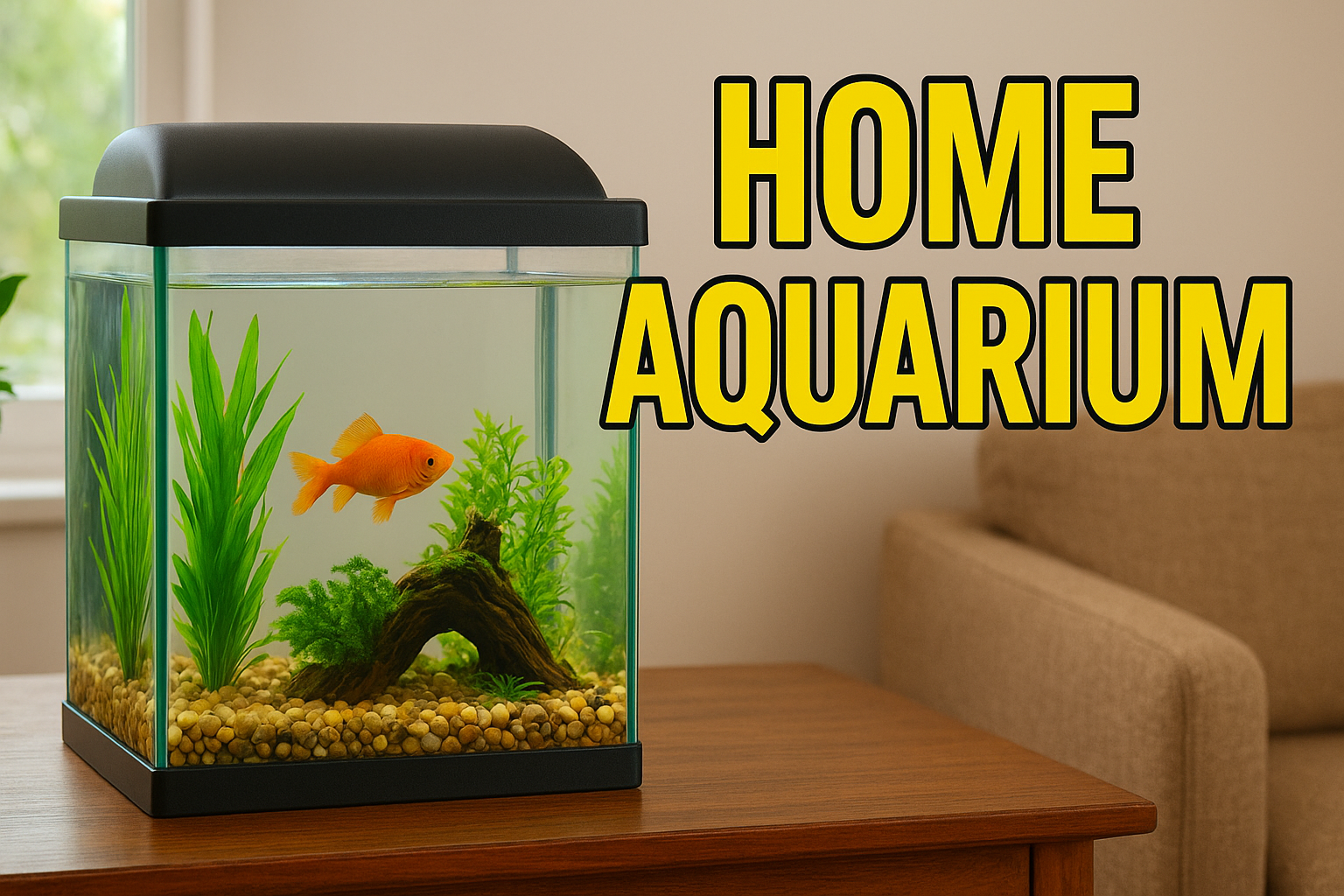Bringing a home aquarium into your living space is one of the most rewarding hobbies you can adopt. Whether you’re interested in keeping colorful freshwater fish, stunning saltwater species, or even creating a planted aquascape, an aquarium provides both beauty and relaxation. A well-maintained aquarium can transform a room into a tranquil retreat while offering endless opportunities to learn about aquatic ecosystems.
In this guide, we’ll dive deep into everything you need to know about home aquariums—including types, setup, maintenance, fish selection, aquarium safety, and long-term care.
What is a Home Aquarium?
A home aquarium is an artificial ecosystem where aquatic life—such as fish, plants, and corals—can thrive under controlled conditions. Unlike ponds or outdoor water features, home aquariums are designed for indoor environments, allowing hobbyists to enjoy aquatic life in their living rooms, offices, or bedrooms.
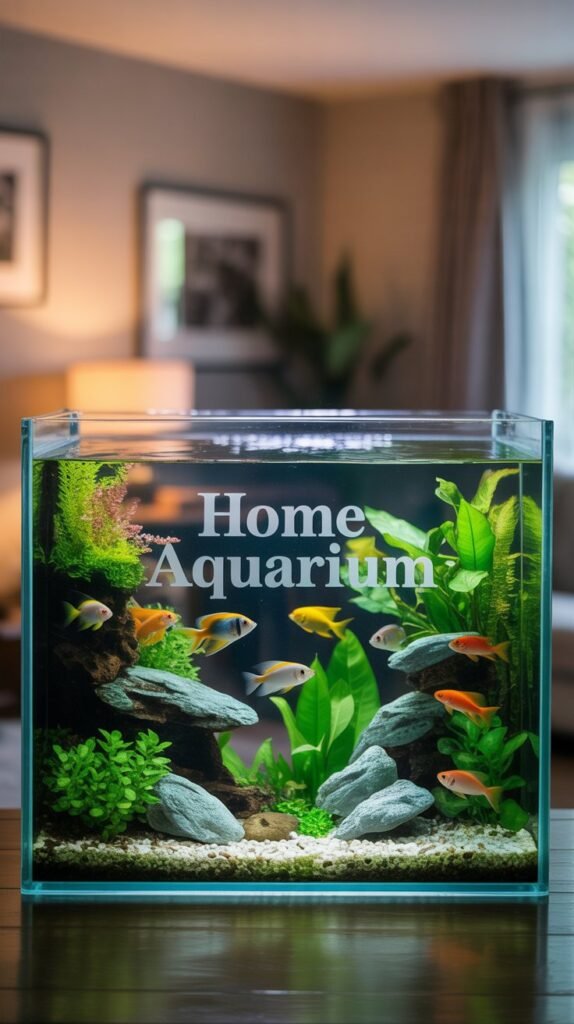
Aquariums range from small nano tanks that hold just a few liters of water to massive setups that can rival public aquarium exhibits. They may be simple freshwater tanks with hardy species like guppies and tetras, or complex saltwater reef aquariums with corals, anemones, and exotic marine fish.
Benefits of a Home Aquarium
A home aquarium is more than just a decorative feature—it provides psychological, educational, and therapeutic benefits.
1. Stress Relief and Relaxation
Studies show that watching fish swim can reduce stress and anxiety. Aquariums are often placed in waiting rooms, hospitals, and offices for this reason.
2. Educational Value
Maintaining a home aquarium teaches patience, responsibility, and biology. Children can learn about ecosystems, nitrogen cycles, and the importance of balance in nature.
3. Aesthetic Enhancement
Aquariums serve as living art. They bring movement, color, and tranquility into any room, making them an excellent interior design choice.
4. Therapeutic Effects
Many therapists recommend aquariums for people suffering from high blood pressure, insomnia, or stress-related conditions
Types of Home Aquariums
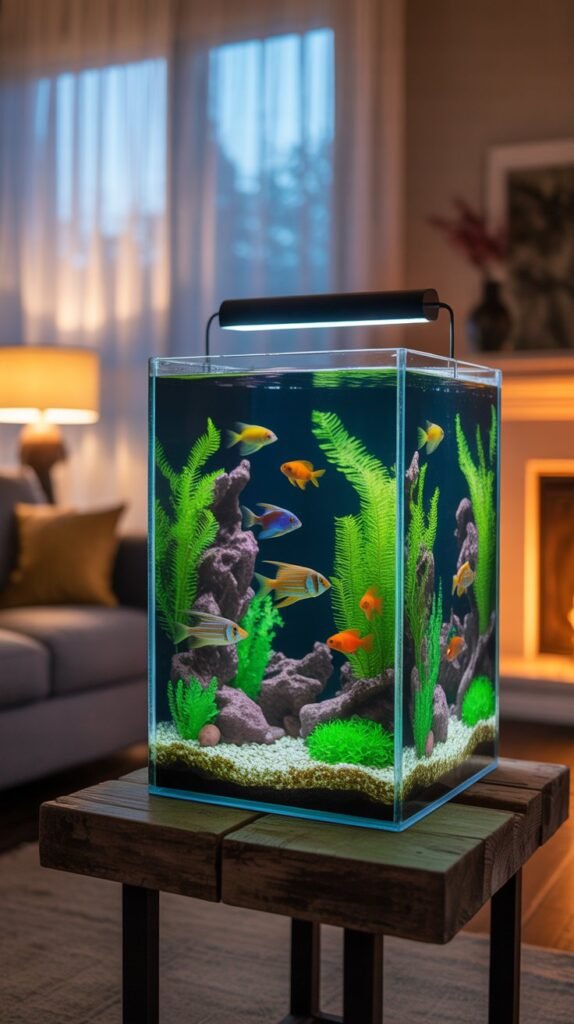
Before starting, it’s important to understand the different types of aquariums available. Each type requires unique care and equipment.
1. Freshwater Aquariums
- Easiest to maintain and ideal for beginners.
- Popular fish: Guppies, Betta fish, Tetras, Mollies, Goldfish.
- Affordable setup and wide availability of fish.
2. Saltwater Aquariums
- More challenging but visually stunning.
- Popular fish: Clownfish, Tang, Lionfish, Angelfish.
- Requires careful water parameter monitoring and higher costs.
3. Reef Aquariums
- A specialized type of saltwater aquarium that houses corals, invertebrates, and reef fish.
- Requires strong lighting and stable water chemistry.
4. Planted Aquariums
- Freshwater tanks focused on aquatic plants.
- Creates a natural look, oxygenates the water, and provides shelter for fish.
5. Nano Aquariums
- Small tanks under 10 gallons.
- Best for small fish species or shrimp.
- Requires careful maintenance since small water volumes fluctuate quickly.
6. Biotope Aquariums
- Designed to replicate specific natural habitats (Amazon River, African lakes, etc.).
- Great for advanced hobbyists who enjoy creating authentic ecosystems.
Essential Equipment for a Home Aquarium
To create a healthy and thriving aquarium, the right equipment is essential:
- Aquarium Tank – Glass or acrylic tanks in sizes ranging from 5 gallons to over 200 gallons.
- Filtration System – Keeps water clean and removes toxins. Options include sponge filters, canister filters, and hang-on-back filters.
- Heater & Thermometer – Essential for tropical fish that need stable temperatures (24–28°C).
- Lighting – Vital for plant growth and coral health. LED lights are most popular.
- Air Pump – Increases oxygen levels in the water.
- Substrate – Gravel, sand, or specialized plant substrate depending on your aquarium type.
- Water Conditioner – Removes chlorine and makes tap water safe for fish.
- Test Kits – Monitors ammonia, nitrite, nitrate, pH, and salinity (for saltwater tanks).
Setting Up a Home Aquarium
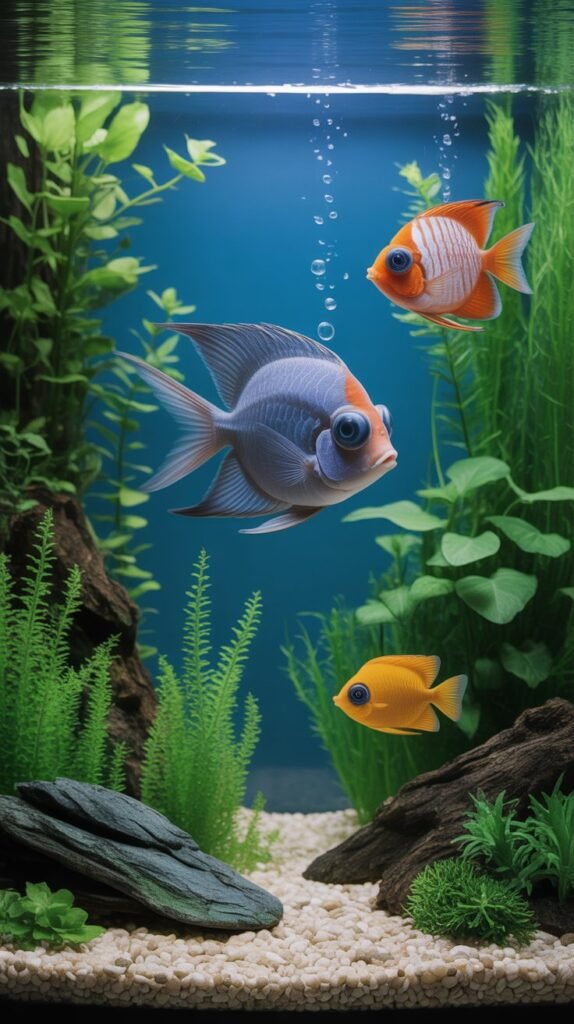
Starting an aquarium isn’t just about filling a tank with water and adding fish. Proper setup ensures long-term success.
Step 1: Choose the Right Tank Size
- Beginners should start with at least a 20-gallon tank.
- Larger tanks are easier to maintain since they provide more stable water parameters.
Step 2: Select a Location
- Place your aquarium away from direct sunlight to prevent algae growth.
- Ensure the stand can support the weight (1 gallon of water = 8.34 pounds).
Step 3: Install Equipment
- Set up the filter, heater, and lighting before adding water.
Step 4: Add Substrate and Decorations
- Rinse gravel or sand before adding it.
- Use driftwood, rocks, and plants for a natural look.
Step 5: Fill with Water and Cycle the Tank
- Use dechlorinated water.
- Cycle the tank for 3–6 weeks to establish beneficial bacteria before adding fish.
Step 6: Introduce Fish Gradually
- Add a few hardy fish at first.
- Monitor water quality and increase stock slowly.
Choosing Fish for Your Home Aquarium
Fish selection depends on your aquarium type, size, and experience level.
Best Freshwater Fish for Beginners:
- Guppies
- Betta Fish
- Neon Tetras
- Corydoras Catfish
- Mollies
Best Saltwater Fish for Beginners:
- Clownfish
- Firefish Goby
- Royal Gramma
- Damselfish
Compatibility Matters
- Avoid mixing aggressive and peaceful species.
- Research each species’ size, diet, and tank requirements.
Aquarium Maintenance: Keeping Your Tank Healthy
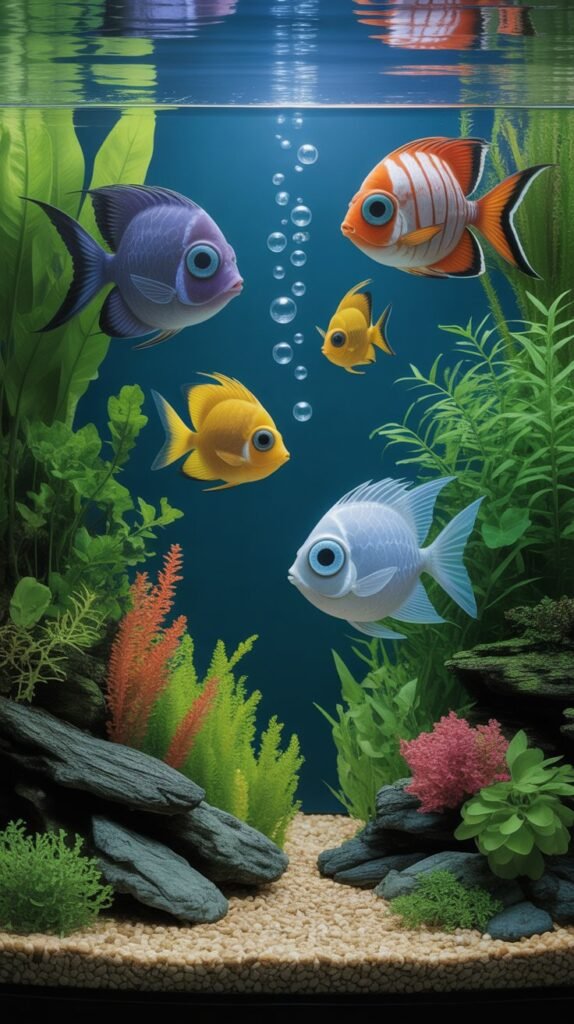
Maintenance is crucial for long-term success.
Weekly Tasks
- Test water parameters.
- Perform a 20–30% water change.
- Clean the glass with an algae scraper.
Monthly Tasks
- Rinse filter media in tank water (not tap water).
- Vacuum substrate to remove waste.
- Inspect equipment for wear and tear.
Feeding Guidelines
- Feed fish 1–2 times daily.
- Only provide food they can consume in 2–3 minutes.
- Overfeeding leads to water pollution.
Aquarium Safety Tips
To ensure your home aquarium remains safe:
- Always use a surge protector for electrical equipment.
- Avoid placing the tank near heat sources or air conditioners.
- Wash hands before and after handling aquarium items.
- Never use soap or chemicals when cleaning the tank.
Common Mistakes to Avoid in Home Aquariums
- Adding too many fish at once – Leads to ammonia spikes.
- Skipping the nitrogen cycle – Results in fish deaths.
- Overfeeding – Causes pollution and algae growth.
- Ignoring compatibility – Leads to stress and aggression.
- Not performing regular maintenance – Reduces fish lifespan.
The Cost of a Home Aquarium
The cost depends on the type and size of the aquarium:
- Freshwater beginner tank (20 gallons): $100–$300
- Saltwater setup (40 gallons): $500–$1000+
- Planted aquarium: $200–$600
- Reef aquarium: $1000+
Long-Term Care and Enjoyment
A home aquarium is not just a short-term project—it’s a long-term hobby. With proper care, aquariums can last for decades and provide endless joy. Many hobbyists grow from small tanks to elaborate aquascapes, reef systems, or even breeding projects.
FAQs about Home Aquariums
1. Is a home aquarium hard to maintain?
Not if you follow proper setup and maintenance routines. Freshwater aquariums are beginner-friendly, while saltwater tanks require more care.
2. How often should I clean my aquarium?
Perform weekly water changes and monthly deep cleaning of substrate and filters.
3. Can I keep fish and plants together?
Yes, live plants improve water quality and provide natural hiding places for fish.
4. Do I need a heater for my home aquarium?
If you’re keeping tropical fish, yes. Cold-water species like goldfish do not require heaters.
5. How many fish can I keep in my tank?
Follow the “1 inch of fish per gallon” rule as a general guideline, but research species requirements.
6. Which aquarium is best for beginners?
A freshwater tank with hardy fish like guppies, mollies, or tetras is best.
7. Can I use tap water in my aquarium?
Yes, but always treat it with a water conditioner to remove chlorine and chloramine.

